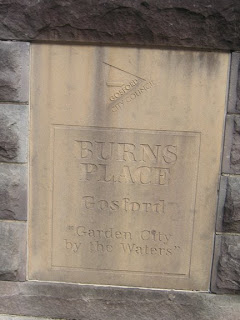The unmistakable winner in the affection of the contributors is the bushland on Rumbalara and Presidents Hill, followed by the Broadwater, with hot spots at Kibble Park and the Swimming Pool. The town is circled by “red dot” positive feelings, i.e. the non-built environment, with a swathe of “blue negative dots” from the western entrance to the Gosford basin, through the stadium and the Leagues Club, Baker Street and parts of Mann Street.
Interestingly this follows the course of the obliterated Gosford Creek. Is this negativity some kind of karmic revenge for disregarding the natural energies of the place, one muses?
Contributors clearly liked being in Kibble Park, at least the grassy bit. No response to the hard-surfaced area to the west of Eliza Street. Emotional anaesthesia seems to be present there and other places seldom frequented such as the dead, blank wall, streetscapes surrounding the shopping centres.
We note that some people, like Miles Buffalo, who have developed independent visions, have tried to take the ‘Gosford Creek’ as a key element in their design. Miles has also completely removed the road from the waterfront – a great improvement, and made a garden/park as the centre piece.

Driving in from Erina Centre (teeming with Easter shoppers), to an almost deserted Gosford, I wondered if it might be better to make a virtue of necessity, and market Gosford as the most peaceful and tranquil town in NSW; a place of gardens, parks, animals, outdoor entertainment etc. Some attempts have already been made in this direction.

Our emotion mapping of Gosford project, and the dominance of natural and organic flows that emerge when people follow their psychogeographic journeys, makes an interesting comparison to the Gosford “Masterplan”.

Complaints in the past about the process of laying out the town on a square grid, that did not take into account natural landforms, seemingly has resulted in the process of laying out plans based on circles – centred, and given radii, so that the intersection of the circumference lines occur where it is convenient for some determined purpose.
In addition to “lines of desire", perhaps we need to introduce an allowance for ‘polydirectional perversity.'
Interestingly this follows the course of the obliterated Gosford Creek. Is this negativity some kind of karmic revenge for disregarding the natural energies of the place, one muses?
Contributors clearly liked being in Kibble Park, at least the grassy bit. No response to the hard-surfaced area to the west of Eliza Street. Emotional anaesthesia seems to be present there and other places seldom frequented such as the dead, blank wall, streetscapes surrounding the shopping centres.
We note that some people, like Miles Buffalo, who have developed independent visions, have tried to take the ‘Gosford Creek’ as a key element in their design. Miles has also completely removed the road from the waterfront – a great improvement, and made a garden/park as the centre piece.
Driving in from Erina Centre (teeming with Easter shoppers), to an almost deserted Gosford, I wondered if it might be better to make a virtue of necessity, and market Gosford as the most peaceful and tranquil town in NSW; a place of gardens, parks, animals, outdoor entertainment etc. Some attempts have already been made in this direction.
Our emotion mapping of Gosford project, and the dominance of natural and organic flows that emerge when people follow their psychogeographic journeys, makes an interesting comparison to the Gosford “Masterplan”.

Complaints in the past about the process of laying out the town on a square grid, that did not take into account natural landforms, seemingly has resulted in the process of laying out plans based on circles – centred, and given radii, so that the intersection of the circumference lines occur where it is convenient for some determined purpose.
In addition to “lines of desire", perhaps we need to introduce an allowance for ‘polydirectional perversity.'
No comments:
Post a Comment